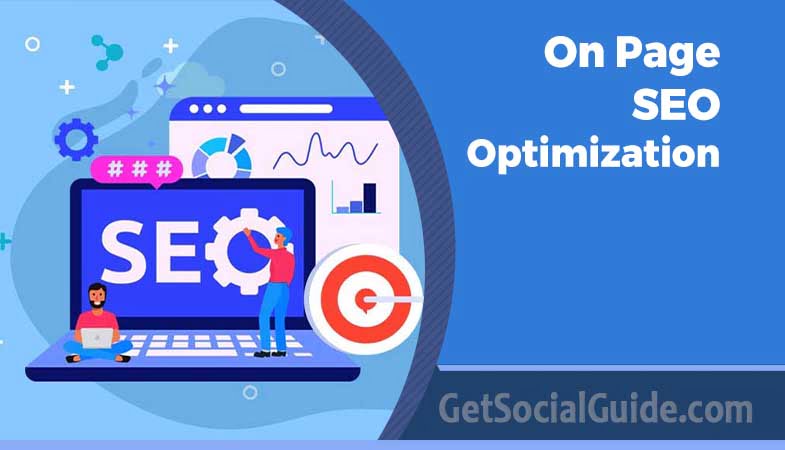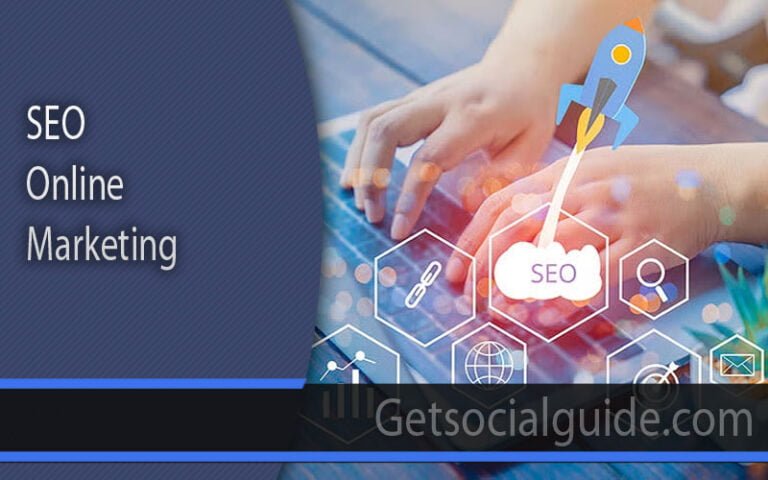On-Page SEO Optimization: A Complete Guide For Newbie in 2025
Have you ever noticed that your website’s position in search results can change even if you haven’t made significant updates? Well, that’s likely due to Google’s continuous adjustments in determining which websites to prioritize in search rankings. Over time, Google has introduced updates such as Panda, Penguin, Helpful Content, and Hummingbird, guiding website owners on how to enhance their sites for more links and improved content.
Despite these updates, the fundamental practices for on-page SEO have remained relatively consistent. The actions you take on your webpage, such as using appropriate language and organizing content effectively, primarily aim to enhance the overall user experience. However, some SEO professionals may not fully grasp this concept.
Google’s ultimate goal is to ensure visitors are satisfied when they land on your website. This is assessed by factors like the time users spend on your site and their engagement with your content.
In essence, on-page SEO involves optimizing your website in ways that you can control. This includes addressing technical issues, using relevant keywords strategically, and ensuring the quality of your content. By implementing these practices, your website is more likely to achieve higher rankings in search results.
Nevertheless, there are additional aspects to consider in on-page SEO, which we’ll explore further as we delve into the topic.
Let’s begin.
Keyword Research and Strategy

To kick off a successful on-page SEO strategy, you should begin with keyword research. This involves identifying the terms and phrases that your target audience commonly uses when searching online. Useful tools like Google Keyword Planner, Ahrefs, and SEMrush can assist in discovering impactful keywords.
Personally, I recommend using Google Keyword Planner (since it’s free) and SEMrush.
Let’s delve into the On-Page SEO Keyword Planner. There are four main types of keywords: informational, navigation, commercial, and transactional. Each type serves a different purpose in the realm of SEO. Let’s break them down.
1. Informational Keywords
Intent: To seek information or knowledge on a specific topic.
Examples:
- “How to tie a tie”
- “History of the Eiffel Tower”
User Action: Users are typically in the early stages of research and may not be actively looking to make a purchase.
Content Focus: Blog posts, articles, tutorials, and educational content.
Intent: To navigate to a specific website or webpage.
Examples:
- “Facebook login”
- “CNN website”
User Action: Users have a specific destination in mind and are seeking a direct path to it.
Content Focus: Brand or website homepage, specific product pages.
3. Commercial Keywords
Intent: To gather information with the intent to make a purchase in the future.
Examples:
- “Best DSLR cameras”
- “Top running shoes reviews”
User Action: Users are in the consideration phase, comparing products or services before making a decision.
Content Focus: Product reviews, comparison guides, buying guides.
4. Transactional Keywords
Intent: To complete a transaction or make an immediate purchase.
Why is Keyword Research important?
Keyword research is a crucial aspect because it allows us to understand what people are searching for on the internet. By identifying the right keywords, we can ensure that our website appears in search results when individuals seek information or products related to our offerings.
Think of it as deciphering the language your customers use. This understanding enhances our website’s visibility on search engines, attracts the appropriate audience, and ensures that our content aligns with what people are actively searching for.
In essence, keyword research serves as a roadmap for creating content that resonates with user interests, playing a pivotal role in the success of our website. As demonstrated in a study by Ahrefs, a notable finding reveals that 90% of pages don’t receive organic search traffic from Google. This underscores the importance of strategic keyword research in optimizing website performance and visibility.
Ensuring a search demand for any topic you plan to write about becomes possible through conducting keyword research. This process allows you to identify the specific terms people are actively searching for. By ranking well in Google for your target keyword, you can then enjoy a consistent flow of highly targeted traffic to your website.
Important Concept on Keyword Research
Focus Keyword:
The focus keyword or keyphrase is the term you aim for a specific page on your website to be discovered for on Google. This is determined through keyword research and is instrumental in optimizing a page for search engine visibility.
Long-Tail Keywords:
Long-tail keywords are more specific and niche compared to broader head keywords. These are longer and more detailed search terms that often face less competition, making it easier to rank for them. Despite potentially lower search volumes, users searching for long-tail keywords are often more motivated to take action, such as making a purchase.
Search Intent:
Understanding search intent is crucial as it goes beyond keywords to uncover what users truly want or need. This involves identifying the underlying goals of a searcher, whether it’s seeking information, making a purchase, or subscribing. Crafting content that directly addresses the searcher’s needs is essential, aligning with the concept of content design
Content Quality and Relevance
The content on your website plays a crucial role in capturing and engaging your intended audience. To secure higher rankings on search engines, it’s vital to offer informative, pertinent, and captivating content that brings value to your readers. This encompasses written content, images, videos, and audio elements. Written content, including blog posts, articles, case studies, whitepapers, and more, holds particular significance.
The objective is to create content that not only resonates with your audience but is also favored by search engines like Google. Search engines strive to deliver results that are not only valuable but also directly relevant to users’ queries. This is where the concept of Search Engine Optimization (SEO) content comes into play.
SEO content is strategically crafted with search engines in mind, making it easily understandable and, consequently, eligible for higher rankings in search results. The ultimate goal of SEO content is to produce material that Google deems worthy of appearing on the first page of the search engine results page (SERP).
By achieving this, businesses can significantly enhance their visibility, draw in more organic traffic, and effectively connect with their target audience. Therefore, investing in high-quality, SEO-friendly content stands as a pivotal strategy for achieving success online.
Why is Content important?
Content holds immense importance for SEO as it significantly influences how search engines evaluate and rank websites. Search engines, like Google, employ algorithms to crawl websites and scrutinize their content. These algorithms consider factors such as keywords, relevance, and user experience to determine a website’s position on the search results page.
Here’s why content is pivotal for SEO:
Relevance and Authority:
- High-quality content signals relevance and authority to search engines.
- It indicates that the website provides valuable information related to user queries.
Search Engine Ranking:
- Quality content enhances a website’s likelihood of ranking higher on search engine results pages (SERPs).
- Well-optimized content, incorporating relevant keywords, contributes to improved visibility.
User Engagement:
- Quality content engages users and encourages them to spend more time on the website.
- Engaged users are more likely to explore different pages, reducing bounce rates.
Return Visitors:
- Valuable content brings users back to the website.
- Regularly updated and informative content fosters a loyal audience.
Various Content Types:
- Blog Posts: Informative blog posts contribute to visibility and ranking.
- Videos: Engaging videos enhance user experience and increase time spent on the site.
- Infographics: Visually appealing infographics present information attractively and are shareable.
Quality content benefits both search engines and users. For search engines, it signals relevance and authority, leading to higher rankings. For users, it provides valuable information, an engaging experience, and a reason to return. Through consistently creating relevant, informative, and engaging content, businesses can enhance their SEO, attract organic traffic, and establish a robust online presence.
Title Tags and Meta Descriptions are critical elements of HTML code situated in the header of a web page. They play a vital role in assisting search engines in comprehending the content of a page, and whenever a page appears in search engine results, its Title Tag and Meta Description are typically displayed.
Here’s why Title Tags and Meta Descriptions are essential for SEO:
Communication to Search Engines:
- Title Tags and Meta Descriptions convey the essence of a webpage to search engines.
- They offer a succinct summary of the page’s content, aiding search engines in understanding its relevance to user queries.
Visibility in Search Results:
- Well-crafted Title Tags and Meta Descriptions contribute to a page’s visibility in search results when users perform a search.
- They act as the snippet of information users see on the results page, influencing their decision to click on a particular link.
Keywords in Title and Meta:
- It’s crucial to include keywords in title and meta descriptions; if the keywords are present at the start, they tend to perform better than those that don’t.
Things to Keep in mind while writing Title and Meta
When composing Title Tags:
Ensure relevance to the specific page content.
Make sure the title accurately reflects the content of the page.
Place key keywords near the front for visibility.
Position important keywords towards the beginning for better visibility in search results.
Write naturally, avoiding keyword stuffing.
Craft the title in a natural and readable manner, avoiding excessive use of keywords.
Avoid duplication; each page needs a unique title.
Ensure that each page has a distinct title to prevent confusion and enhance search engine understanding.
Optionally include your brand name at the end.
Consider adding your brand name towards the end of the title if it fits cohesively.
Keep it between 60-64 characters for optimal display.
Maintain a title length of 60-64 characters for optimal presentation in search results.
Craft a compelling title to entice clicks.
Create a captivating title that sparks interest and encourages users to click on your link.
When writing Meta Descriptions:
Create unique descriptions for every page.
Develop distinct meta descriptions for each page to provide specific information.
Use keywords for accurate Content representation.
Integrate relevant keywords to accurately represent the content of the page.
Inspire curiosity without revealing too much.
Spark curiosity in users without giving away all the details, encouraging them to click.
Include a clear Call to Action (CTA).
Include a concise call to action to guide users on the desired next steps.
Keep it concise, between 150-154 characters.
Maintain a concise meta description within the range of 150-154 characters for optimal presentation in search results.
Highlight Unique Selling Points (USPs):
Showcase what makes your page distinct by emphasizing unique selling points in the meta description.
Optimize for User Engagement:
Craft descriptions that resonate with users, prompting them to engage with the content.
Consider Mobile Users:
Given the prevalence of mobile searches, ensure that your meta descriptions are concise and impactful for users on smaller screens.
A/B Testing for Optimization:
Experiment with different versions of meta descriptions through A/B testing to identify what resonates best with your audience.
Regularly Review and Update:
Periodically review and update meta descriptions to align with any changes in your content or marketing strategies.
Remember, effective Title Tags and Meta Descriptions not only contribute to search engine optimization but also serve as an essential tool for enticing users to click on your pages. Striking the right balance between clarity, relevance, and engagement is key to maximizing their impact on search engine results page.
Header tags, indicated in HTML as <h1> to <h6>, guide browsers in styling text on a webpage. They follow a hierarchical structure where <h1> represents the most crucial text, followed by subsequent tags used for subheadings and further organization.
For instance:
<h2>What is a Header Tag?</h2>
Header tags replicate the structure of headings in traditional print content. H1 tags emphasize the main theme, while H2 and H3 serve as subheadings. H4 to H6 tags provide additional structure within subsections.
These tags offer benefits for both users and search engines. Users gain a preview of the content’s structure, while search engines like Google obtain context and hierarchy for understanding the page. Consider header tags as chapter titles in a book – a quick scan provides a clear overview of the content.
Their significance for SEO lies in assisting Google’s comprehension of your content and enhancing user-friendliness by improving readability and accessibility. Utilizing appropriate header tags contributes to a well-organized and SEO-friendly webpage.
URL Structure
A Uniform Resource Locator (URL), commonly referred to as a web address or link, is what we input into a browser to access a specific webpage.
URL Structure: When individuals click on links, they are essentially navigating directly to your website. The appearance of your page URL is not merely a technical detail; it holds significance.
Here are some reasons why a good URL structure matters for SEO:
User Experience and Page Ranking:
- User experience is crucial because people tend to remember and type in names that are shorter or easy to recall.
- Page ranking in search results is also impacted. An effective URL should incorporate a targeted keyword, aiding search engines in comprehending the content of the page.
In summary, a well-structured URL not only contributes to a positive user experience but also plays a role in optimizing your page for search engines, helping them understand the content’s relevance to specific keywords.
SEO Best Practices for URLs:
Optimal Structure:
- Establish a simple, logical, and easy-to-remember URL structure that conveys meaning.
- Ensure intuitiveness for both users and search engines.
HTTPS Protocol:
- Utilize HTTPS for a secure connection, instilling trust in users and complying with Google’s ranking signals.
Exclude “www” Prefix:
- Hide the “www” prefix for a cleaner and more modern appearance.
- To access a plain domain, reroute the www version.
Relevant Page URLs:
- Customize page URLs to be descriptive and relevant to the content.
- Improve user experience and increase click-through rates.
Keep it Concise:
- Shorten URLs for simplicity and higher ranking potential.
- Use the page or post title as a default but consider brevity.
Meaningful Keywords:
- Include 1-2 relevant keywords in the URL for clarity.
- Avoid keyword stuffing and align with the page’s title.
Hyphens for Separation:
- Use hyphens to separate words in URLs for readability.
- Avoid spaces and underscores.
Conclusion
Navigating the intricate landscape of On-Page SEO in 2024 requires a strategic blend of technical expertise, content finesse, and adaptability to ever-evolving algorithms. As search engines continue to prioritize user experience and content quality, the importance of fine-tuning your On-Page SEO strategies cannot be overstated. This comprehensive guide serves as your compass, providing insights into the intricate dance between keywords, content, and technical optimizations.
Remember, SEO success is not a one-time endeavor but a continuous journey. Regularly audit your site, stay attuned to emerging trends, and refine your strategies. The digital terrain is dynamic, and the websites that thrive are those that evolve alongside it.
FAQs On-Page SEO
How often should I update my Content for optimal SEO performance?
Updating your content regularly is beneficial for SEO. Aim for periodic reviews and updates, especially for pages that target high-impact keywords. This not only signals freshness to search engines but also ensures your content remains relevant and valuable to your audience.
Are backlinks still important for On-Page SEO?
Yes, backlinks play a crucial role in SEO. While this guide focuses on On-Page SEO, having quality external links pointing to your content enhances its credibility. Aim for natural, relevant backlinks from authoritative sources to bolster your site’s overall SEO performance.
How can I monitor my website’s Core Web Vitals?
Monitoring Core Web Vitals is integral to ensuring a positive user experience. Use tools like Google Search Console to access Core Web Vitals reports. Regularly review these reports, identify areas for improvement, and optimize your site accordingly. Prioritizing factors like loading performance, interactivity, and visual stability contributes to a seamless user experience and improved SEO rankings.
How do I optimize images for On-Page SEO?
Image optimization is crucial for SEO. Ensure images are appropriately compressed to minimize file size without compromising quality. Use descriptive file names and include relevant alt text, providing context for search engines and accessibility for users. Optimized images contribute to faster page loading times and improved overall SEO.
What is the significance of mobile responsiveness in On-Page SEO?
Mobile responsiveness is paramount for On-Page SEO. With the majority of users accessing the internet via mobile devices, search engines prioritize mobile-friendly websites. Ensure your site is responsive, providing a seamless experience across various screen sizes. Google’s mobile-first indexing considers mobile versions of pages, making mobile optimization a key factor in rankings.
Should I use long-tail keywords in my Content?
Yes, incorporating long-tail keywords is advisable for On-Page SEO. Long-tail keywords are more specific and can attract a targeted audience. They often face less competition, making it easier to rank for them. Integrate relevant long-tail keywords naturally into your content, aligning with user intent and improving your chances of visibility in search results.
While social media signals may not directly impact traditional SEO rankings, a strong social media presence indirectly benefits On-Page SEO. Social media platforms can drive traffic to your website, increase brand visibility, and encourage engagement. Share your content on social channels to broaden its reach, potentially attracting backlinks and enhancing overall SEO performance.
Remember, these FAQs provide general guidance, and it’s essential to adapt strategies based on your specific website, industry, and target audience. Regularly assess performance metrics, stay informed about industry trends, and refine your On-Page SEO approach accordingly.



